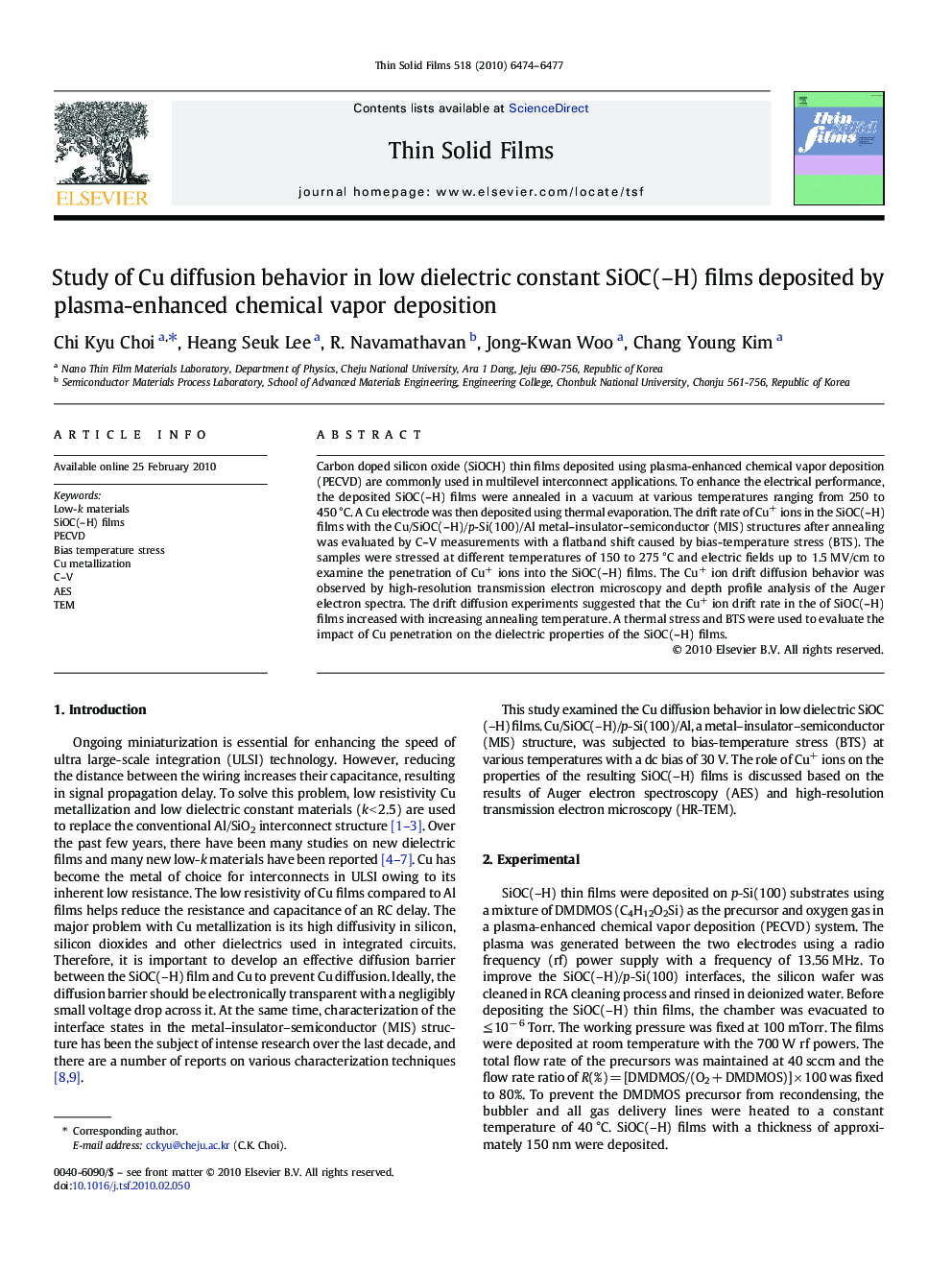| کد مقاله | کد نشریه | سال انتشار | مقاله انگلیسی | نسخه تمام متن |
|---|---|---|---|---|
| 1669445 | 1008883 | 2010 | 4 صفحه PDF | دانلود رایگان |

Carbon doped silicon oxide (SiOCH) thin films deposited using plasma-enhanced chemical vapor deposition (PECVD) are commonly used in multilevel interconnect applications. To enhance the electrical performance, the deposited SiOC(–H) films were annealed in a vacuum at various temperatures ranging from 250 to 450 °C. A Cu electrode was then deposited using thermal evaporation. The drift rate of Cu+ ions in the SiOC(–H) films with the Cu/SiOC(–H)/p-Si(100)/Al metal–insulator–semiconductor (MIS) structures after annealing was evaluated by C–V measurements with a flatband shift caused by bias-temperature stress (BTS). The samples were stressed at different temperatures of 150 to 275 °C and electric fields up to 1.5 MV/cm to examine the penetration of Cu+ ions into the SiOC(–H) films. The Cu+ ion drift diffusion behavior was observed by high-resolution transmission electron microscopy and depth profile analysis of the Auger electron spectra. The drift diffusion experiments suggested that the Cu+ ion drift rate in the of SiOC(–H) films increased with increasing annealing temperature. A thermal stress and BTS were used to evaluate the impact of Cu penetration on the dielectric properties of the SiOC(–H) films.
Journal: Thin Solid Films - Volume 518, Issue 22, 1 September 2010, Pages 6474–6477